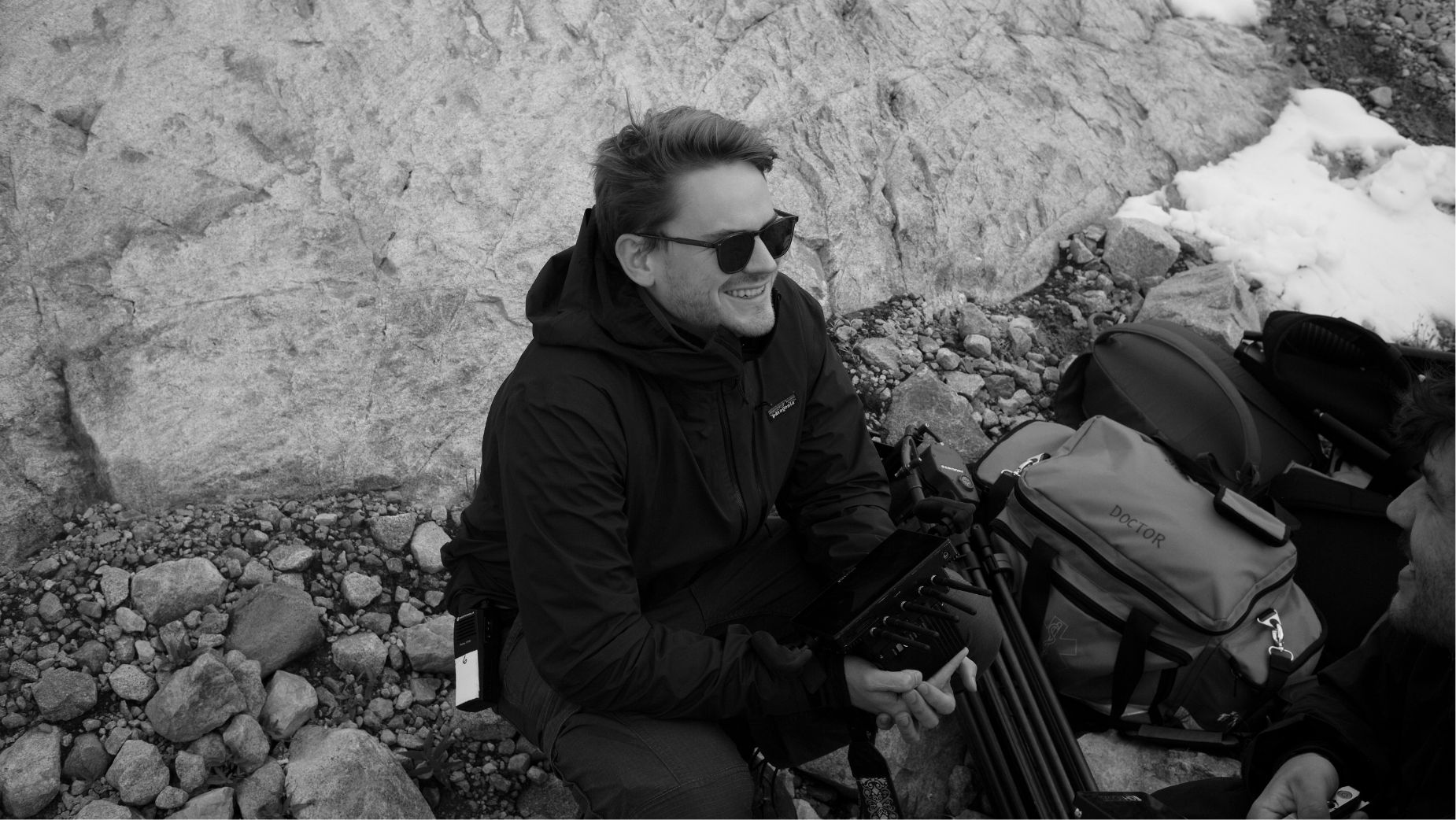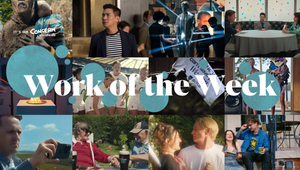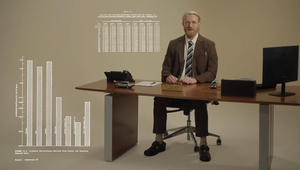
Directing with Purpose: Inside Cameron Thuman’s Vision

Cameron Thuman got into directing because of skiing. He grew up skiing locally on what was less of a mountain and more of a steep hill of sheer ice in upstate New York. When his family moved to Park City in Utah, he recalls – through 10-year-old eyes– being in awe of a 22 foot halfpipe. By age 12 his entire life revolved around filming and editing ski videos.
Soon, Cameron would be ranked seventh in the US for halfpipe skiing for 18 and under. But by this point, his love for storytelling and filmmaking grew much stronger than competing. It was while helping out at a boxing gym that he met executive producer and showrunner, Jack Amiel, who would teach him how to become a storyteller and shape his mentality. “[We] liked to shoot the shit, and those conversations still guide me today,” Cameron tells me.
From there, he studied writing and directing at university, and was hired by line producer Scott Chester to assist on A24’s horror film, ‘Hereditary’. He would spend his summers learning the business and working on features and TV shows, before entirely devoting himself to directing. “Since then, I’ve never looked back.”
He’s come a long way since, focusing on building visually immersive worlds that focus on striking, character-driven narratives that propel you on a journey. His distinctive creative signature has earned him plenty of attention – just last week the One Club for Creativity selected Cameron as a winner of Young Guns 22.
We sat down with Cameron to get under the hood of his craft.
LBB> How would you define your directing style, and what are the core elements you aim to bring to each project?
Cameron> My style tends to be gripping, immersive, and humane. The visuals need to grab you, the sound needs to pull you in, and the emotion needs to be heightened. Everything is coming from a grounded place of truth and purpose.
LBB> Could you walk us through your creative process when developing a new concept or story? Where do you draw inspiration, and how do you translate that into a cohesive visual narrative?
Cameron> I start with a deep research phase, which involves reading articles, scrolling through visuals, and listening to audio bites. Naturally, I see visuals in my head, and these ‘imprints’ become the key points that guide the story from point A to B.
LBB> Your work spans a wide range of formats and genres, from commercials to music videos and short films. How do you adapt your approach to different types of projects, and do you have a favourite genre to work in? Why?
Cameron> I always prioritise the story. While there are common stylistic traces across my work and tendencies that blend into each piece, I let the story inform the approach.
For example, recently, with Motherland and PTSB, our Olympics campaign was built around the internal journey of the Paralympians and Olympians. In contrast, I just did a Toyota campaign with Radke (my Canada reps), and it was a cat-and-mouse chase to the top of the hill. PTSB was an intimate set with a single camera, while Toyota had eight-plus cameras with three units working simultaneously.
Genre-wise, I especially love working on campaigns that tie directly into life's monumental moments.
LBB> What were some of the biggest challenges you faced breaking into the industry, and how did you overcome them? Is there any advice you wish you had received when you were starting out?
Cameron> When I started, I thought, "This is the one...This is the project that will break me in." I learned that you must hold onto this belief and never let go of that mindset. I was willing to risk it all 100 times over again to build. Because it is true, all it takes is one project to change everything. However, you need a body of work to back it.
My advice to young directors is that nothing is more important than your voice and taste. Hold on to that tight and always embrace your storytelling identity. This industry has a lot of noise, but your voice will guide you.
Meeting like-minded individuals will get you through all the challenges. I found this in Dilan Mistry as we built our careers together and continued to trade ideas, learn, and grow from each other.
LBB> How do you approach working with clients and collaborators, especially when balancing their vision with your creative instincts? Can you share a story about a project where you had to navigate this balance?
Cameron> Listening, hearing others out, and caring about understanding someone else's point of view is our most powerful tool. I also know that an agency or client has hired me for a reason, and they tend to want my instincts. I will bring new ideas, push hard, and challenge. However, I will always create something together that embodies the core of what the agency and client are after. That comes first, always.
LBB> As someone with experience across different storytelling mediums, what do you think is the most important quality for a director to have today? How do you personally cultivate this quality in your work?
Cameron> From script to screen, I love and thrive on uncovering filmmaking choices that make an audience feel something, escape, and travel to a new world. The most important quality is finding the unified visual language that defines how you, as the director, transform the idea from script to screen.
This all comes with balancing the ship. Clients, agencies, crew members, and actors will have different personalities. As a director, you have to set the tone and workflow while also being the person willing to carry the burden.
At the end of the day, nothing beats chasing after the perfect moment or discovering something new that you never expected.
LBB> What’s a recent project that you’re particularly proud of, and what made it memorable or challenging for you as a director?
Cameron> The most recent memorable moment was watching Kellie Harrington, Rhys McClenaghan, Paul O'Donovan, and Fintan McCarthy bring home golds to Ireland. Directing ‘The Human Behind The Athlete’ for Publicis Dublin and PTSB was a real honour.
Ger Roe, ECD at Publicis Dublin led the charge. I was lucky enough to develop the concept and script with Ivona Poljak and Isabel Harvey.
As a director, my biggest challenge was, "Will the athletes feel bought into the human behind the athlete?" This was where my preparation work lived. We had actual scene work. We had beats they had to live in, embody, and act through. Motherland’s Steven Courtney and Margaret Levingstone were an incredible support system. They helped create a space where I could work the scenes on set and let the beats come to life.
Another part of my preparation was with director of photography, Garrett Hardy Davis, to capture the raw emotion of these athletes in a contemporary world. We wanted every image to be graphic and profound and lean into traditional storytelling.
LBB> Looking ahead, are there any dream projects, genres, or types of stories you’re eager to explore? What’s next on your creative horizon?
Cameron> Right now, I just want to stay close to the fire and give my full attention to whatever is in front of me. I love how my EP at Motherland, Margaret Levingstone, does an amazing job of channelling my creative focus, which I bring to my day-to-day work.
But since you asked, my current dream is to stay connected to all pathways of filmmaking, between commercial and long-form narrative. A few of my goals in the advertising space are the Winter Olympics, Porsche, and Nike. Olympic stories are the quintessential human journey of perseverance. Porsche covers all the senses. They are intoxicating – it’s the feeling of freedom. A story-driven Nike campaign is up there in terms of goals. Director Rupert Sanders’s iconic storytelling work with Nike and the Jordan brand is like fine wine. Creating something of that cultural magnitude is a huge source of inspiration.















